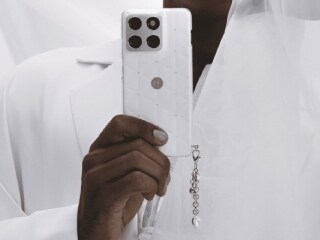- Home
- Laptops
- Laptops News
- New optical diode to help make faster, cooler computers
New optical diode to help make faster, cooler computers

Here comes an optical device that may lead to new and more powerful computers that also run faster and cooler.
Researchers at Washington University in St. Louis have developed an essential component of new computers that would run on light.
"We believe that our discovery would benefit many other fields involving electronics, acoustics, plasmonics and meta-materials," said Lan Yang, an associate professor of electrical and systems engineering at Washington University.
The team created an optical diode by coupling tiny doughnut-shaped optical resonators - one with gain and the other with loss - on a silicon chip.
This diode is capable of completely eliminating light transmission in one direction and greatly enhancing light transmission in the other nonreciprocal light transmission, explained lead author Bo Peng from Yang's team.
"Coupling of so-called loss and gain devices using PT (parity-time)-symmetry could enable such advances as cloaking devices, stronger lasers that need less input power, and perhaps detectors that could 'see' a single atom," Yang added.
To make the optical diode, the researchers used two micro-resonators positioned so that light can flow from one to the other.
One device is the "lossy" silica resonator. The other incorporates the chemical element erbium into the silica structure for gain.
When the rate of gain in one resonator exactly equals that of loss in the other, the "phase transition" occurs at a critical coupling distance between the resonators.
Simply put, when a "lossy" system is coupled with a "gain" system such that loss of energy exactly equals gain at an equilibrium point, a "phase transition" occurs.
"Our resonators are small enough to use in computers and future optical information processors," Peng noted.
According to Yang, the optical diodes were built from silicon, which has very little material loss at the telecommunication wavelength. The concept can be extended to resonators made from other materials for better performances.
The PT-symmetry concept can be extended to electronics, acoustics and other fields to create one-way channels, and photonic devices with advanced functionalities, said the paper, published in the journal Nature Physics.
Get your daily dose of tech news, reviews, and insights, in under 80 characters on Gadgets 360 Turbo. Connect with fellow tech lovers on our Forum. Follow us on X, Facebook, WhatsApp, Threads and Google News for instant updates. Catch all the action on our YouTube channel.
- Samsung Galaxy Unpacked 2025
- ChatGPT
- Redmi Note 14 Pro+
- iPhone 16
- Apple Vision Pro
- Oneplus 12
- OnePlus Nord CE 3 Lite 5G
- iPhone 13
- Xiaomi 14 Pro
- Oppo Find N3
- Tecno Spark Go (2023)
- Realme V30
- Best Phones Under 25000
- Samsung Galaxy S24 Series
- Cryptocurrency
- iQoo 12
- Samsung Galaxy S24 Ultra
- Giottus
- Samsung Galaxy Z Flip 5
- Apple 'Scary Fast'
- Housefull 5
- GoPro Hero 12 Black Review
- Invincible Season 2
- JioGlass
- HD Ready TV
- Laptop Under 50000
- Smartwatch Under 10000
- Latest Mobile Phones
- Compare Phones
- Realme P4x 5G
- OnePlus Ace 6T
- OPPO A6x 5G
- Samsung Galaxy Z TriFold
- Poco F8 Ultra
- Poco F8 Pro
- Huawei Mate 80 RS Master Edition
- Huawei Mate 80 Pro Max
- Asus ProArt P16
- MacBook Pro 14-inch (M5, 2025)
- Poco Pad M1
- Poco Pad X1
- Just Corseca Skywatch Pro
- Honor Watch X5
- Acerpure Nitro Z Series 100-inch QLED TV
- Samsung 43 Inch LED Ultra HD (4K) Smart TV (UA43UE81AFULXL)
- Asus ROG Ally
- Nintendo Switch Lite
- Haier 1.6 Ton 5 Star Inverter Split AC (HSU19G-MZAID5BN-INV)
- Haier 1.6 Ton 5 Star Inverter Split AC (HSU19G-MZAIM5BN-INV)












